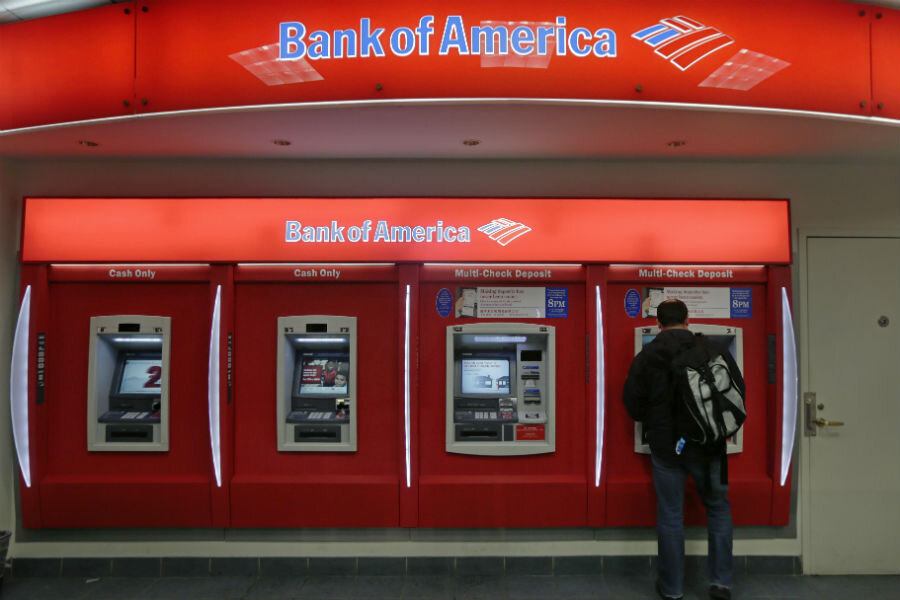Why are banks charging such high ATM fees?
Loading...
Average ATM fees for people reached record highs this year, as banks lean on non-customers to generate increasingly large revenues, according to an annual survey on checking accounts.
Those who withdraw money outside of their network are often hit with two distinct fees, found the survey by Bankrate.com: first, an average of $2.90 from the bank from which the money is being withdrawn, then an additional $1.67 from the person’s own bank, for using an out-of-network ATM. That comes out to an average of $4.57 for a single withdrawal – the highest rate in ten years.
The news comes at the tail end of an electoral season during which the topic briefly garnered attention from both Democratic candidates. In January, Democratic presidential contender Sen. Bernie Sanders of Vermont promised to cap out-of-network ATM fees at $2, writing on Twitter that he found it “unacceptable that Americans are paying a $4 or $5 fee each time they go to the ATM.” Hillary Clinton made a similar, though perhaps more desultory, gesture on Late Night with Stephen Colbert last year, calling the practice “usurious”.
Banks say there’s no obligation to use ATMs that are out of their bank’s network. The fees were excluded from regulation in the 2010 Dodd-Frank Act, which tried to stop the nickel-and-diming of merchants by capping charges imposed by banks for debit card purchases.
ATM transactions cost banks virtually nothing – they choose to charge non-customers simply because it’s an easy way to generate income, as The Christian Science Monitor reported last year.
"ATM transactions, maintenance fees, and overdraft fees are low hanging fruit for banks increasing fee revenue," Bankrate.com chief financial analyst Greg McBride told the Monitor then.
Nor is there any sign that after ten straight years of increases in such fees, banks will ease up on the practice, equity analyst Kevin Barker told Bankrate.com. “I would expect ATM fees to continue to move higher,” he said.
The fees account for a small fraction of bank earnings, according to a 2015 study by banking data firm SNL Financial. Of the 25 banks examined in that study, ATM fees made up less than 1 percent of earnings for all but six. The totals were still quite large: across the industry, banks with more than $1 billion in assets raked in some $437.7 million in a single quarter from ATM fees. Wells Fargo made $90 million, and Bank of America $87 million.
The fees tended to make up a higher percentage of revenues for smaller banks. Woodforest National Bank of the Woodlands, Texas made 5.6 percent of its revenue off ATM fees over the period studied, for example, while First National Bank Texas of Killeen, Texas brought in over 4.84 percent.
In April, Monitor guest blogger Carrie Kirby noted how easily such fees can add up, in a list of eight tips to avoid paying them:
Just a few dollars might seem insignificant at the time, but what you may not think about is that ATM fees can make up an obscenely high percentage of the money you're withdrawing. For instance, if you are taking out $50 and you pay a $2.50 fee to the bank whose machine you are using, plus a $2 fee to your own bank, you just paid an additional 9% to access your own money.








